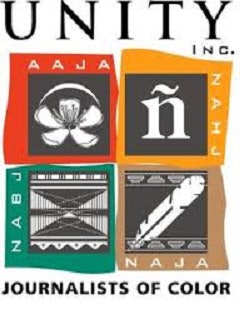Unity: Journalists for Diversity, a professional coalition that helped increase diversity in the news industry beginning in the early 1990’s, has decided to shutter after nearly 30 years.
“This is a heart-breaking decision,” Unity president Neal Justice said this week, “but we’ve decided that the best way to move forward is to work with our respective groups and build on the incredibly strong bond we have together.”
Originally named Unity: Journalists of Color, the collaboration was organized to stage a joint gathering of journalism groups of color as their ranks in the profession began to increase after the civil disturbances of the 1960’s. With widespread industry support, the first joint convention, Unity 1994, was held in Atlanta and presented jointly by the National Association of Black Journalists (NABJ), National Association of Hispanic Journalists (NAHJ), the Asian American Journalists Association (AAJA) and Native American Journalists Association (NAJA).
 The original Unity partners.
The original Unity partners.The conference brought together thousands of strangers for the first time and was more successful than many had expected. It served as a bridge to link working journalists of multiple ethnic groups from big cities and small towns across the nation and even from abroad. It gave academics connections for placing students, allowed employers to meet hordes of skilled professionals and helped dismantle walls between the four groups. At its peak, the convention drew more than 8,000 attendees.
“Unity was a unique, special and important organization,” said Virgil Smith, retired vice president for diversity and talent acquisition at Gannett, the giant newspaper holding company that worked closely with the Unity groups to recruit dozens of employees.
Convening every four years, Unity “was the only organization in the world that brought thousands of journalists of color together to discuss important issues, interview presidential candidates, learn from each other and build lifelong relationships,” added Smith, who spent 44 years with McClatchy Newspapers and Gannett before retiring from Gannett in 2015.
But within a few years of its auspicious debut, Unity was at odds with itself. It had few written rules to govern its leaders and leadership succession, or how to divide costs and revenue. The background differences persisted through several more Unity conferences, as each convention grew in attendance with little resolution of the core governance and finance issues.
By 2008, financial support of Unity was on the decline, as financial supporters facing a struggling economy found the conference an easy budget cut. The move to reduce or eliminate Unity support by citing the overall need to cut costs came at the same time that many of the executives who were champions of diversity programs — Al Neuharth, Anthony Ridder, Katherine Graham, Virgil Smith and Al Fitzpatrick — were retired and being replaced by successors less enthusiastic about industry diversity programs.
The nation’s economic dive converged upon Unity as the organization was having worse internal discourse. NABJ, the oldest and largest member of the coalition, withdrew from the partnership in 2011. Two years later, NAHJ, the second-largest partner, withdrew its membership.
“After the 2007-09 great recession, minority journalism associations and the media industry were battered and smaller,” recalled historian and longtime NABJ member Wayne Dawkins, an associate professor in Morgan State University’s School of Global Journalism and Communication. “All of the players had to make tough choices in order to survive and rebuild. Unity did not readjust fast enough. It was only a matter of time that its foundation would come crashing down.”
Unity filled a void for many minority journalists that will be hard to replace, some say.
“One of the voids it filled was having a conference where journalists of color had the opportunity to see and work with people who looked like them and the rich opportunity to interact, meet and learn from other journalists of color in a nurturing environment,” said Smith, echoing colleagues. “The excitement of Unity has not been replicated by any one organization, as Unity brought together the mosaic of journalists that represents good in America.
Sonya Ross, race and ethnicity editor for The Associated Press, was among those saddened by news of Unity’s dissolution.
“It was such an exciting thing,” said Ross, who attended three of the conventions. She said they provided good skills-development trainings, contacts and future hires for the AP.
Justice, media critic for the Minneapolis Star Tribune newspaper, said in a telephone interview with Diverse that the remaining partners of Unity – AAJA, NAJA and the National Association of Lesbian & Gay Journalists, now known as the Association of LGBTQ Journalists – have decided to equally divide the remaining revenue of approximately $68,000. They pledged to earmark the money for multicultural projects that will continue the mission of Unity.
Unity’s name end organization may be gone, Justice said, but “the spirit is still strong.”


















